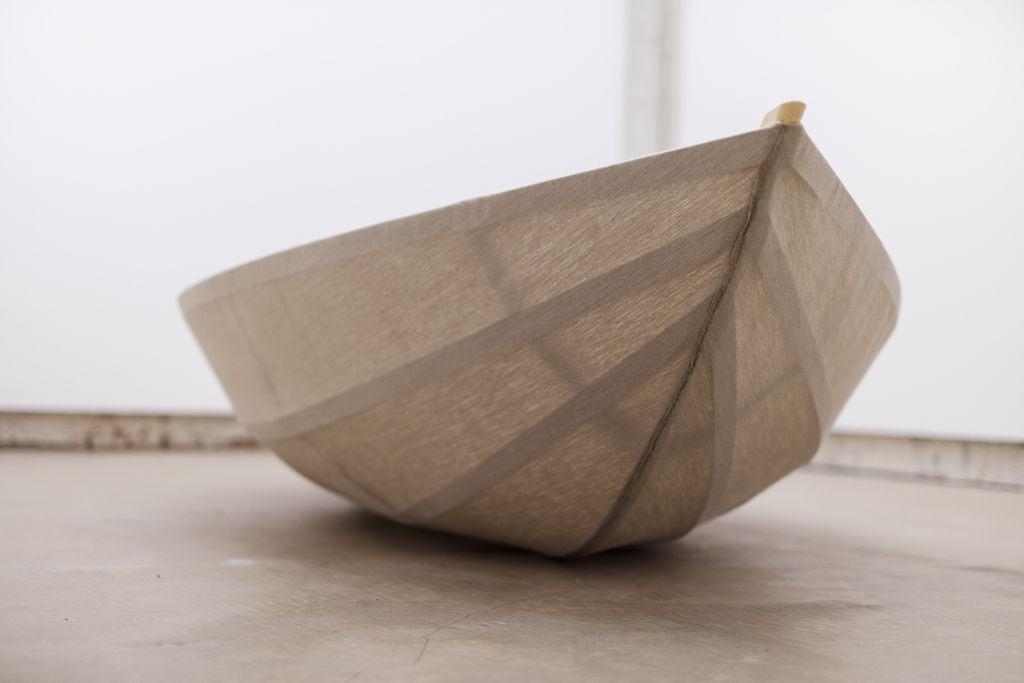en båt / a boat, 2017
On the stone floor of the gallery rests a boat, a painter’s canvas stretched across its frame instead of planking. The sketch for the work depicts two cupped hands, open as if to receive or hand over something. The lines in the palms of the hands are echoed in the grain of the boat’s pine frame. Thus, the body of the boat emerges as a gesture of care, as well as a container for – what exactly? A boat is a vessel to travel in, a tool for displacement, but also the embodiment of dreams and hopes.
The idea for the work was born in 1998 while preparing for an exhibition at Berns konsthall in Stockholm. At the time, Edefalk had made a drawing that depicted a boat attached to a wall with a rope in a large exhibition space. The work wasn’t realized then, but now the time has come for it to be created and exhibited at Stene Projects Gallery.
Cecilia Edefalk works in painting, photography and sculpture and her work is grounded in the classical Western tradition. The conceptual dimensions of the pieces have always been an important part of her work, making her process very time-consuming and her output relatively small. Since the 2000s she has developed both painting and sculpture in her work. Her body of work now includes a boat, which is both a sculptural rendition of an archaic implement and a three-dimensional painting with an inside as well as an outside.
The boat, which has neither mast nor oars, is markedly material. She rests on the floor, exposing her skeleton to the viewer. From this perspective, the work resembles a three-dimensional mandorla – the almond shape that frames the most sacred figures in Hindu, Buddhist and Medieval Christian iconography. The mandorla is a strictly geometric figure that is formed by two overlapping circles and depicts the intersection between heaven and earth. It represents a presence beyond the terrestrial, while still being of this world. The boat is an open shell.
Faith, hope and love are usually symbolized by a cross, an anchor and a heart. Edefalk’s boat lacks an anchor but hope still lives in a boat – a work that finds itself at the intersection between art and instrument, painting and sculpture, and which, through its form alone, gives the impression of absence and presence, grief and care.



